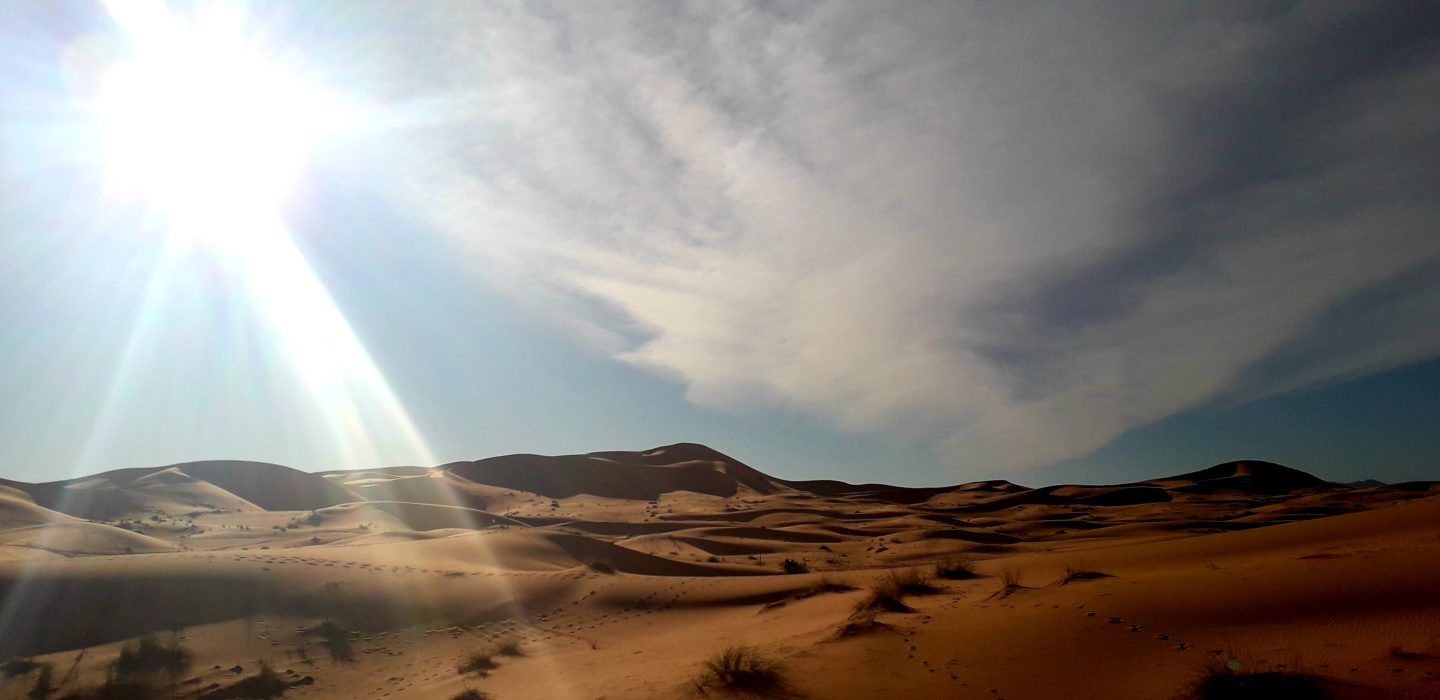Author:
Emi Darnton is a traveller with a passion for Morocco and supporting the Berber families in the Sahara. @morocco.trip.finder and moroccotripfinder.com.
Many people think of Marrakech as the epitome of Moroccan life with its busy, narrow lanes winding through the medina, market stall aromas and shiny trinkets enticing you into each trader’s shop.
Spending a few days experiencing this wonderfully crazy and frenetic place is something that I believe every one of us should experience at least once; but visiting an ‘Erg’ (derived from the Arabic for dune field) is not to be missed. Morocco has several of these impressive seas of sand dunes. My favourite one is Erg Chebbi located in the south-east of Morocco, near Merzouga.
Erg Chebbi is about 10 hours from Marrakech and a perfect trip for two days. Don’t be put off by the travel time, there’s lots to see on the way so the journey itself is part of the fun.
Tips:
- if you go on a private Berber tour you will go off the beaten track to sites you would ordinarily miss on a coach or group tour.
- Research ahead and it will be much more than a desert trip. You will also discover villages, ancient sites and landscapes along the way.
Don’t miss: Ouarzazate:
This is a popular stop en-route for a couple of reasons. Firstly, The High Atlas Mountains are a spectacle. With views into valleys and across snow-capped mountains, who wouldn’t want to make it part of their itinerary? Check out Ait Benhaddou, a historic ksar (fortified village) built into the mountain. A walk to the top, up through winding lanes and steps, is well worth the epic views and entrance will cost around 20 MAD (dirhams). This UNESCO World Heritage Site has been host to many famous films such as: The Jewel of the Nile, The Mummy, Gladiator and Game of Thrones.
Tip: try and time your ascent with the ‘Call to Prayer.’ Your guide will tell you the timings – the sound, view and fresh air will stay with you forever.
Alnif:
Located between Zagora and Rissani, this small dusty town is a hotspot for fossil hunters. The Atlas Mountains are packed with fossils and Morocco is one of the most geologically diverse countries in the world. You can stop by the road, walk and explore the immense areas of exposed rock in the Anti-Atlas (small mountains) which are brimming with ammonite and trilobite fossils.
Tip: make sure you have a spare bottle (or few) of water. When you pour water over the dry rock the fossils appear more clearly and defined.
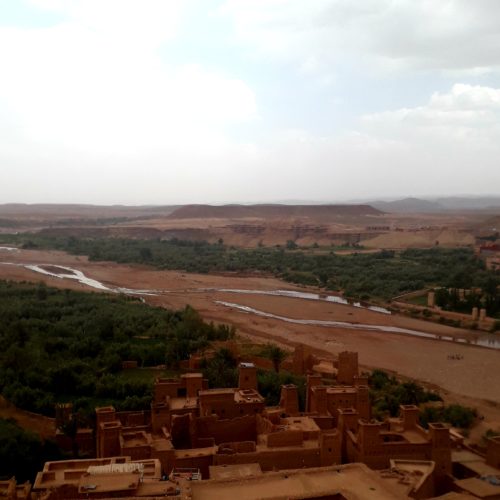
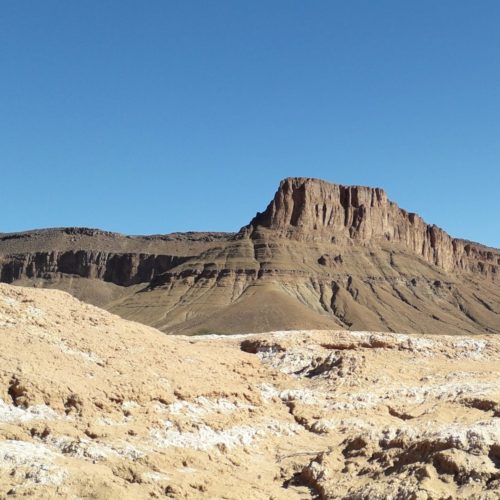
Rissani:
This is the last stop before you reach Merzouga, the gateway to the desert. Rissani is a market town with a rich souk for local traders. On certain days (Tue, Thu, Sun) the market swells to giant proportions with people travelling to sell their ‘cottage industry’ goods, from vegetables and crafts to carpets and camels.
Tip: buy some small, decorative glass bottles to take a little sand home in.
Merzouga:
Merzouga is where you will meet your desert transport – the camel. It’s about an hour’s trek across the sand to the camps and ordinarily timed perfectly to arrive for sunset over the dunes. This part is truly joyous. Your camel guide will be with you the whole time, leading the way. Don’t worry, they could walk it with their eyes closed; they know the desert like the back of their hands.
Tip: buy or bring a long scarf. Your guide will tie a turban for your head and neck to protect you from the heat and any sand on a slightly windy day. Enjoy the lulling motion and epic sand banks and ensure you have a camera!!
Erg Chebbi – the Desert Camp:
You will be met by your Berber hosts with hot, fresh, Moroccan mint tea (or Berber Whisky) and a big smile. Your camp for the night is on the edge of the dunes, with running hot water, flushable loos and food cooked on-site. Depending on the weather, you’ll be able to sit beside a roaring fire, beneath an ocean of stars (including the Milky Way) and listen to your hosts singing traditional song, drumming and telling stories of their culture. Feel free to dance around the fire and wrap up in a blanket whilst gazing away at the sky above. The next day, depending on your time commitments, there are opportunities to explore The Sahara by 4×4, ATV, visit nomadic desert dwellers and enjoy tea with them, visit Khamlia and experience their traditional, deep, hypnotic sub-Saharan Gnaoua music.
Tip: wake up early in the morning and climb to the highest dune to experience the most magical sunrise across the Sahara.
My favourite camp is a luxury, family run Berber camp: www.moonlightdesertcamp.com
Tip: give the desert as much time during your trip as you can. One night is an introduction, two or more is even better!

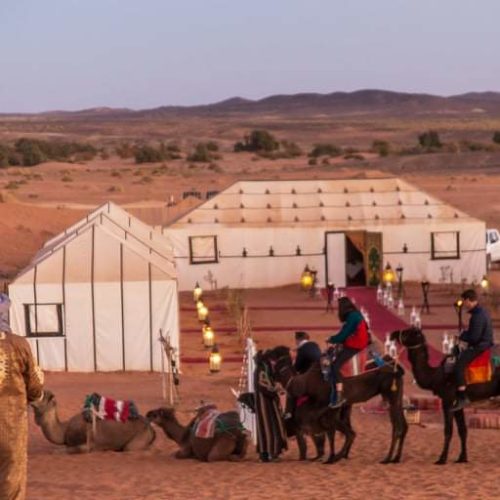
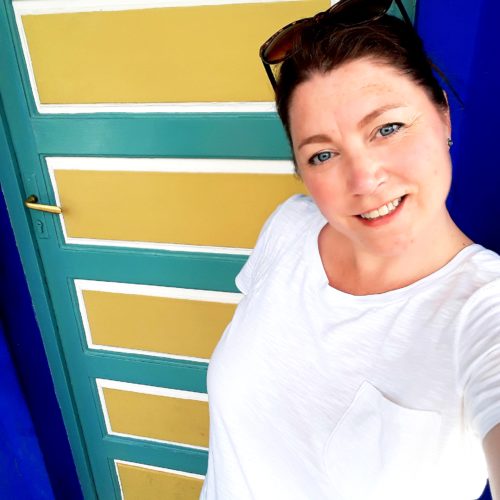
Emi Darnton:
I’m a travelling girl from the UK as well as a mum and book keeper. Morocco is my ‘soul’s homeland’ and the astonishingly beautiful Berbers live as family within my heart. Having originally travelled there with my two boys, I instantly became friends with a Berber family from Erg Chebbi. I vowed to myself to help boost traveller numbers in the desert to support the many Nomadic families living under harsh conditions in the Sahara. Tourism is a lifeline for those who haven’t been fortuitous with a good school education. More so post-Covid than before!
If you have an experience of Morocco, you’d like to share with the instagram world get in touch via @morocco.trip.finder or moroccotripfinder.com or just browse for more inspiration
